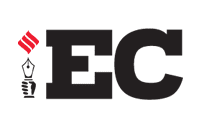TeamLease Digital, a leading specialized staffing firm in India, has released its latest report, ‘Gender Parity—Shaping Workforce Equity’, offering an in-depth analysis of trends in the tech contractual workforce from 2020 to 2024. The comprehensive report highlights the significant rise in women’s participation in tech contractual roles but also underscores persistent barriers in senior leadership representation and pay parity.
Women’s Participation in Tech Contractual Roles on the Rise
India’s tech contractual workforce has seen a significant shift over the past four years, with female participation increasing from 9.51% in 2020 to 27.98% in 2024. This growth has been driven by advancements in digital infrastructure, increased access to remote work opportunities, and the expansion of Diversity, Equity, and Inclusion (DEI) initiatives. However, while more women are entering the workforce, they continue to face significant challenges in career advancement and pay parity, highlighting the need for sustained efforts to ensure long-term equity.
GCCs Lead Gender Inclusion, but Leadership and Pay Gaps Persist
Among all sectors, Global Capability Centers (GCCs) have made the most progress in improving gender diversity, with female workforce representation rising from 31.4% in 2020 to 38.3% in 2024. This increase can be attributed to structured DEI policies, global workforce strategies, and intentional steps fostering a more inclusive workforce across the organisational hierarchy, enhancing greater representation in multiple roles. However, despite improvements at the entry-level, women’s representation in senior leadership positions remains low, growing only marginally from 11.43% in 2020 to 13.60% in 2024.
Despite these advances, pay disparities remain a pressing issue in GCCs. The overall gender pay gap in GCCs stands at 16.10%, with a more pronounced gap of 16.4% at senior levels. In high-demand tech roles, the gender pay gap reaches 22.2%, while in non-tech roles, the gap is considerably lower at just 0.8%. These figures highlight the need for greater female representation in specialized roles.
IT Services: Growing Representation but Stagnant Career Progression
In the IT Services sector, female workforce participation increased from 7.8% in 2020 to 21.2% in 2024, reflecting efforts to create more inclusive hiring practices. However, this increase has not translated into significant career progression, as women’s representation in mid-level roles grew from just 4.13% in 2020 to 8.93% in 2024. These figures indicate that women face significant barriers to advancing beyond entry-level roles. Furthermore, the representation of women in senior leadership roles has seen a fluctuating trend over the past few years. In 2021, women held a modest 4.36%, which rose significantly to 7.39% in 2024, indicating a promising increase in gender diversity within leadership. However, this progress experienced a decline in 2024, as the percentage of women in senior leadership roles fell to 6.91%.
The gender pay gap in IT Services presents another challenge. While the overall pay gap stands at 3.55%, it widens to 6.12% at mid and 8.34% at senior levels, reinforcing women’s limited upward mobility in the sector. The struggle to retain female talent beyond the entry level is driven by systemic challenges such as unconscious bias in promotions, a lack of mentorship opportunities, and workplace policies that do not fully support long-term career growth for women. In non-tech roles within the Services sector, the pay disparity widens to a notable 18.3%.
Tech in Non-Tech Sectors: Male Dominance Continues
While progress has been made in tech-driven industries, non-tech sectors such as Automotive, BFSI, Energy, Healthcare, and Manufacturing continue to be overwhelmingly male-dominated. Female participation in tech roles within these sectors grew from just 1.9% in 2020 to 14% in 2024, but women remain vastly underrepresented in leadership roles.
By 2024, women’s representation at entry and mid-levels had only reached 4% and 5.14%, respectively, demonstrating the persistence of cultural and structural barriers that limit career advancement. Pay disparities in these sectors are also stark. The gender pay gap is 6% at entry-level positions, increasing to 19% at mid-level roles. However, at senior levels, the pay disparity is slightly lower, standing at 13%. Additionally, women hold only 7.17% of tech roles within these industries. The pay gap for tech roles stands at 18%, compared to 15% for non-tech roles, making it critical to implement targeted interventions such as upskilling programs, inclusive hiring policies, and structured career progression frameworks.
Achieving true gender parity means companies must enhance leadership development programs to create structured pathways for women to progress into senior roles. Regular pay equity audits and transparent compensation frameworks can help address salary disparities, ensuring fair pay practices across all levels. Additionally, expanding skills-based hiring initiatives can increase opportunities for women in high-growth areas such as AI, cybersecurity, and data science. Supporting flexible work models and inclusive workplace policies will also be essential in enabling career continuity for women, particularly those balancing professional and caregiving responsibilities.
Neeti Sharma, CEO, TeamLease Digital, further emphasized: “While we celebrate the growing presence of women in tech contractual roles, we must recognize that achieving true gender parity requires sustained efforts and a multi-faceted approach that transcends hiring more women. The lack of representation in leadership positions and the persistent gender pay gap indicate the need for long-term structural change. Companies must work towards creating environments where women can not only enter but also grow and lead in their careers.”
“Workforce equity is not an option but rather a business necessity. Organizations that prioritize gender inclusivity benefit from diverse perspectives, stronger innovation, and improved financial performance. At TeamLease Digital, we remain committed to driving this change by advocating for fair pay practices, career progression opportunities, and a culture of inclusion that empowers women at every level of employment.”

